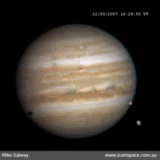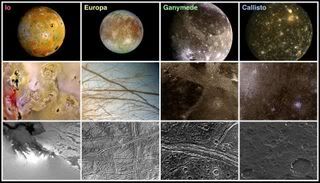jueves, 29 de marzo de 2007

En la Nasa, todos los días se muestra y se explica una foto de sus últimas exploraciones, la que aparece ahora es de Júpiter y sus lunas.
El sur se considera hacia arriba en esta foto, tomada el jueves en la Central Coast de Nuevo Gales. En los primeros frames aparece Ganímedes, la luna más grande del sistema solar, justo en la parte inferior derecha. Europa se ve también en este sector, hacia el final a la derecha aparece finalmente Io.
Acá otra foto de las lunas, sacada de wikipedia

El sur se considera hacia arriba en esta foto, tomada el jueves en la Central Coast de Nuevo Gales. En los primeros frames aparece Ganímedes, la luna más grande del sistema solar, justo en la parte inferior derecha. Europa se ve también en este sector, hacia el final a la derecha aparece finalmente Io.
Acá otra foto de las lunas, sacada de wikipedia

Etiquetas: Astronomia, Ciencia, cultura, Nasa
















Leave your response